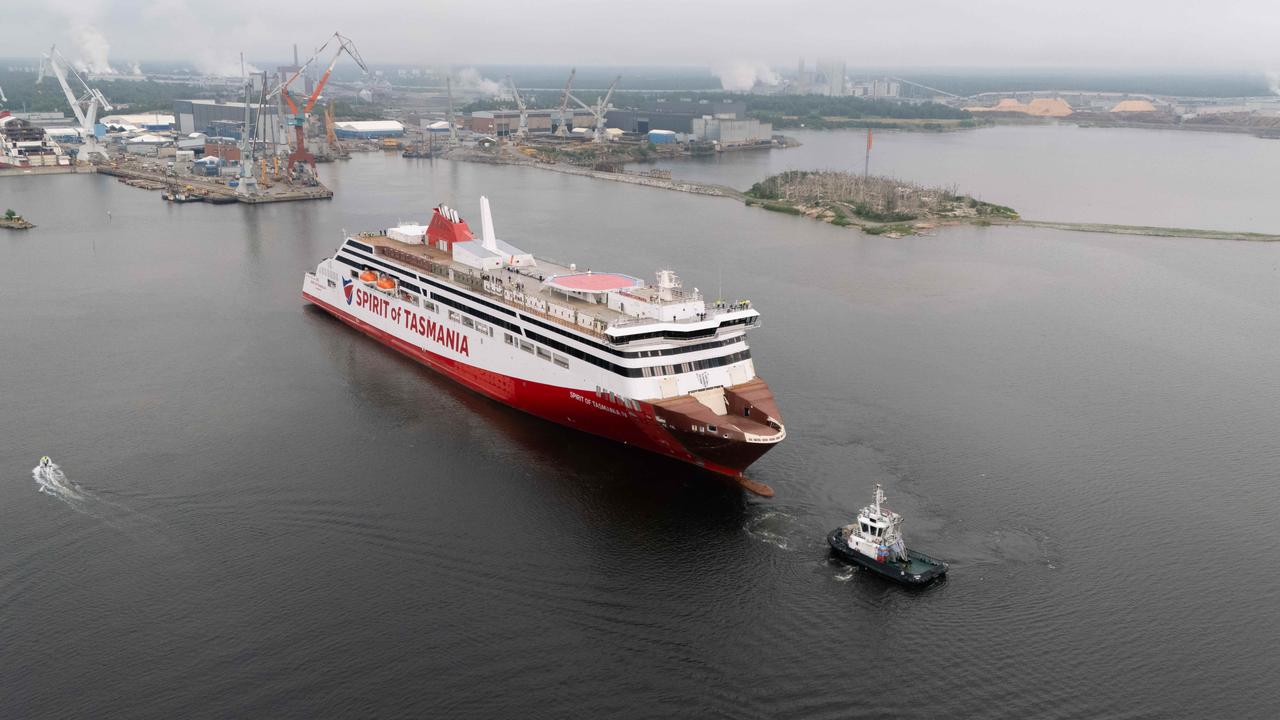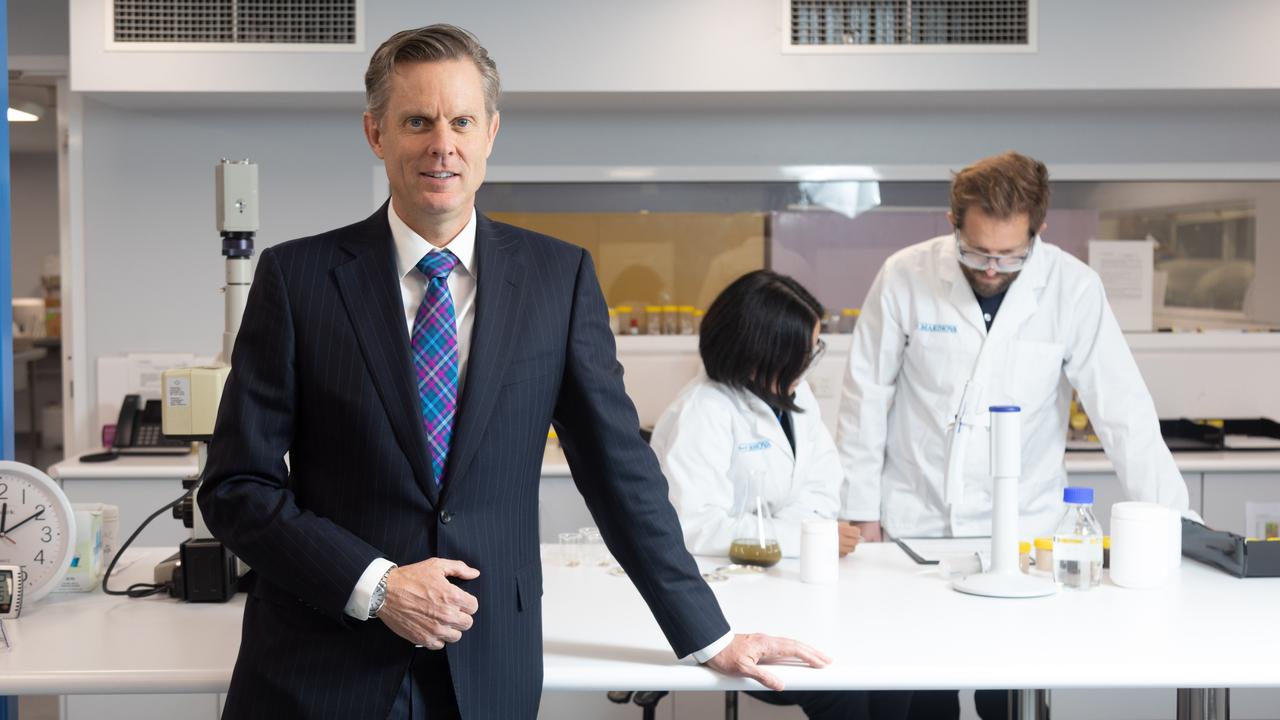Boom industry: Unlocking the super powers of seaweed
Tasmania is at the cutting edge of seaweed research, positioning the state for a leading role in several burgeoning marine bioproducts industries.
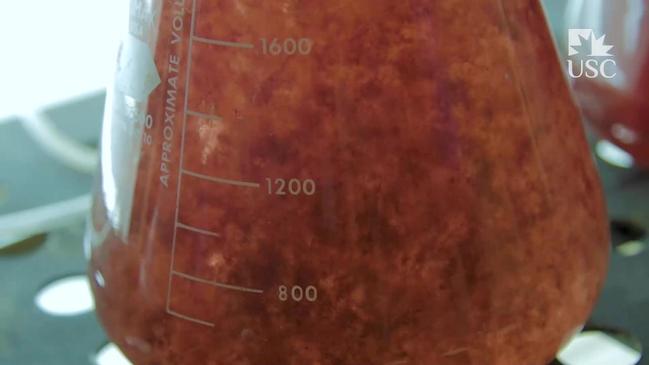
Tasmania
Don't miss out on the headlines from Tasmania. Followed categories will be added to My News.
IT’S often called a superfood but seaweed’s benefits are more wide-ranging than even that term would suggest.
Not only is it a delicious addition to meals, it also possesses nutritional, pharmaceutical and environmental benefits.
Tasmania is at the cutting edge of seaweed research, positioning the state for a leading role in several burgeoning industries.
The federal government has acknowledged the immense potential of seaweed products and has established a new $270m Marine Bioproducts Cooperative Research Centre, in which industry is to partner with the research sector to help address industry-identified problems.
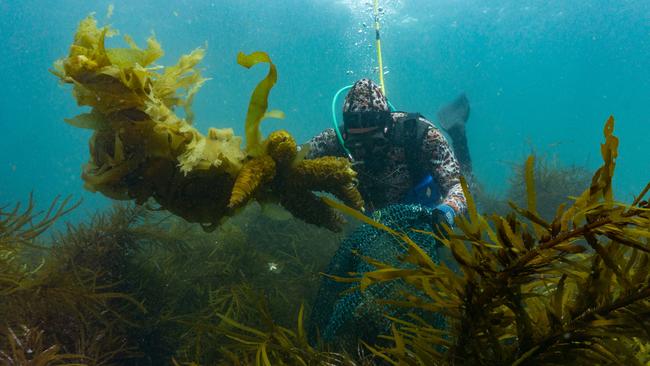
One of the program’s industry partners is Marinova, a Cambridge-based company extracting complex carbohydrates called fucoidans from brown seaweed and selling them to businesses that then incorporate them into products such as nutritional supplements and cosmetics.
“We’re really looking at optimising the best fucoidan extracts for the different human health applications we’re particularly focused on,” Marinova operations manager Damien Stringer said.
“They include things like immune health and anti-inflammation, in particular. Gut health, as well.
“The global marine biotech industry is massive and the marine bioproducts out of that sector that we’re focused on are heading for $1bn turnover by 2030. We’re really looking to tap into that and value-add.
“Tasmania’s a great innovator and there are so many success stories of Tasmanians exporting on a global scale.
“We see marine bioproducts as one of those with a lot of potential. We already have a good track record and we’re looking to expand on it.”
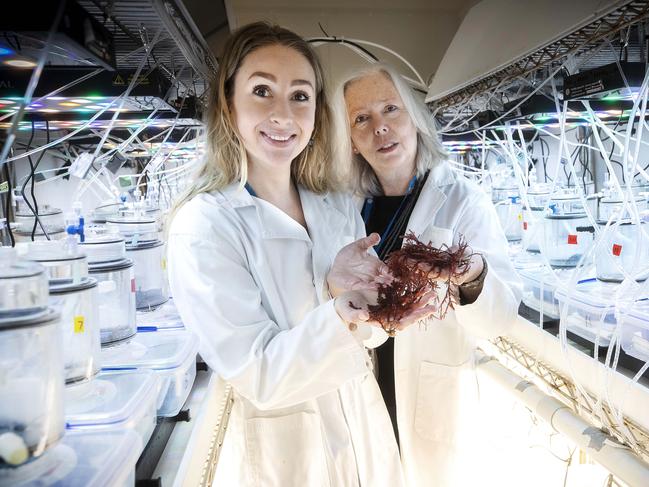
The goal of the CRC is to fast-track the growth of the marine bioproducts industry.
It is to use research and development programs focusing on the production of seaweeds, marine micro-algae and filter feeding animals – as well as the use of advanced manufacturing technologies and processes – to produce bioproducts such as nutraceuticals, omega-3 oils, cosmetics, plant-based proteins, agrochemicals and bioplastics.
The global market for these products is projected to be worth $780bn by 2035, and Tasmania is poised to take a sizeable slice of the pie.
The University of Tasmania is one of 13 research partners in the 10-year CRC program, which is being spearheaded by Flinders University.
Catriona MacLeod, the head of the Ecology and Biodiversity Centre at the Institute for Marine and Antarctic Studies, said there was “a lot going on” in the seaweed space.
“UTAS is already working with the key people in Tasmania and there are more who are keen to invest (in seaweed) – the CRC research is going to give the infrastructure and the sound start-up knowledge base to make sure that that investment is more likely to come to Tassie, but will also help kickstart the industry elsewhere in Australia,” Professor MacLeod said.
“I have to say, we’re pretty pleased in Tassie because we’ve got maybe a bit of a jump on some of the rest (of the states).
“We’ve actually got things in the water and really well-developed companies; companies that actually know what they’re doing, as well as the small-scale start-ups.
“We’re taking a lead in the bioproduction side of things. The two other main programs in the CRC are around processing, and what are the products we’re aiming for.”
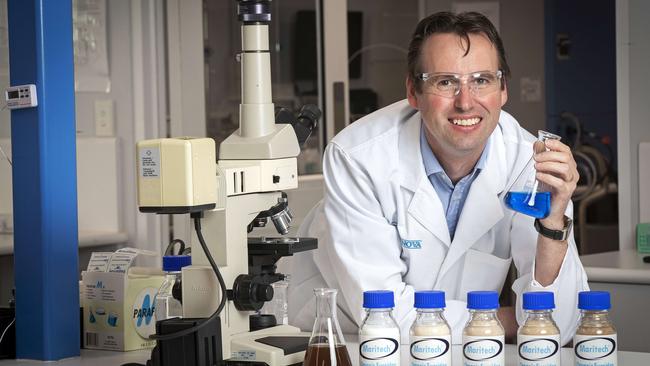
James Ashmore is the director of Kai Ho Tasmanian Sea Vegetables, another of the industry partners participating in the program.
“Marinova and us, we’re the only two commercial operations that have been around for many years actually making money out of seaweed,” he said.
Kai Ho harvests introduced species of seaweed to produce wakame and mekabu. It caters mostly to chefs and the health food market.
While wakame is used in miso soups and many European dishes, mekabu is used as a thickening agent in ice creams and jellies and can be sprinkled on a steak or added to gravy, Mr Ashmore said.
“What we do is we do pest eradication in the wild,” he said. “So that makes us feel good about ourselves and, if we can break even or even turn a profit, we’re happy.”
While Mr Ashmore said the jury was still out on whether the CRC would attract significant new investment into the state, he said he was proud of the fact that Tasmania’s seaweed industry was leading the rest of the country by “a long shot”.
Sea algae a weapon in fight for climate
BETWEEN Maria Island and the Tasmanian mainland, a remarkable plant is being cultivated – one that can help fight climate change.
In the Mercury Passage, Triabunna company Sea Forest harvests asparagopsis, a red algae that can reduce methane emissions from livestock by up to 98 per cent.
“The methane emissions from livestock production contribute to 75 per cent of agricultural emissions in Australia,” Sea Forest chief executive Sam Elsom said. “So being able to have that impact on emissions reduction is sort of the reason why Sea Forest has started.
“We’re talking about less than a fistful of seaweed per animal per day.”
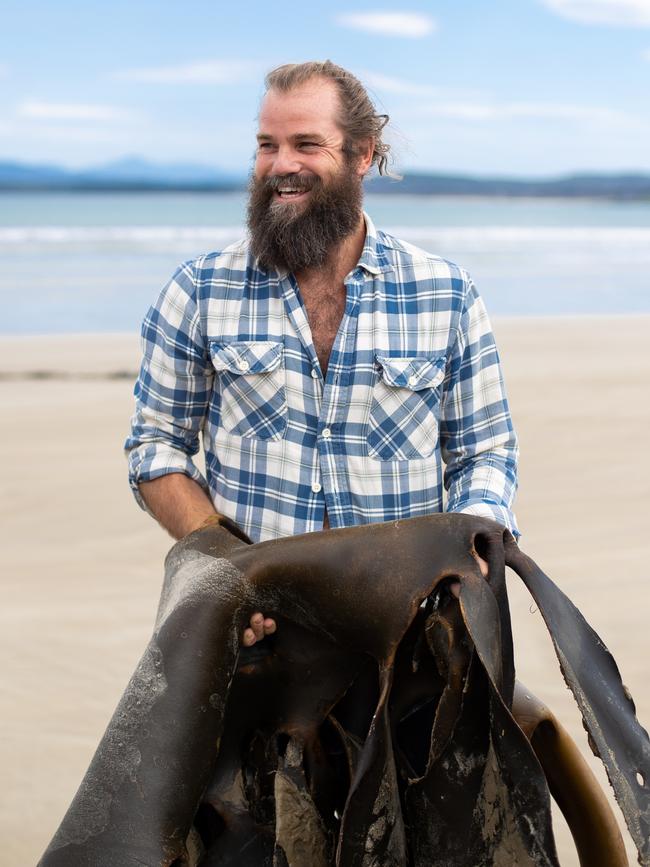
Mr Elsom said asparagopsis had the added benefit of promoting accelerated growth in livestock and, therefore, increased profits for farmers.
“The seaweed has bioactive compounds inside it that disrupt the production of methane or the enzymatic pathway that creates methane in the first place,” he said.
“Through that process of disruption, it converts that which would have been expelled by the animal as gaseous waste product into energy that it uses to grow.”
Mr Elsom said Australia’s seaweed industry had significant scope for growth.
“While the seaweed industry is an $11bn industry globally, in Australia it’s less than $1m,” he said.
“Yet we have more species of seaweed in Australia than any other place on the planet.
“It has huge potential as a growth industry. But we want to also make sure that we’re managing that growth with the utmost respect to protecting the natural biodiversity.”
Originally published as Boom industry: Unlocking the super powers of seaweed


